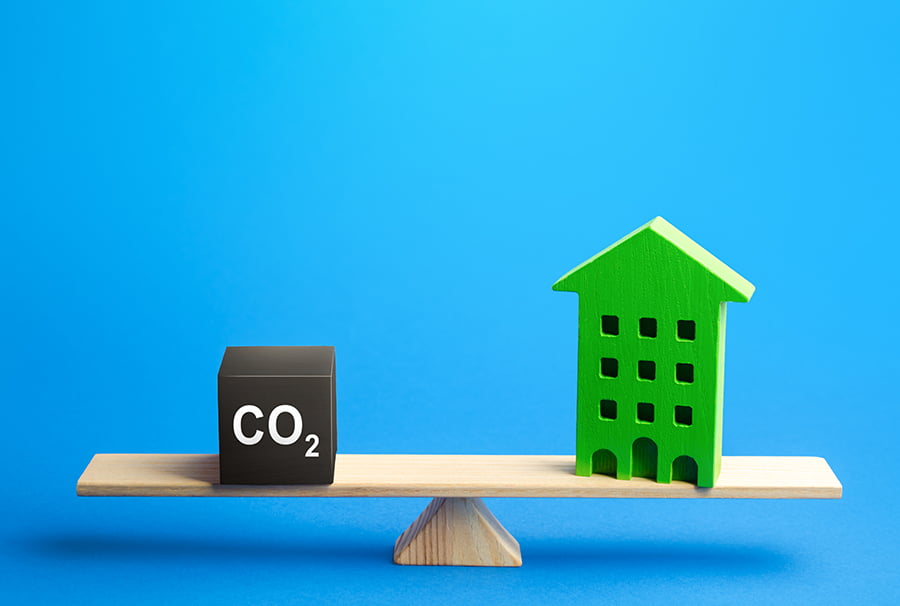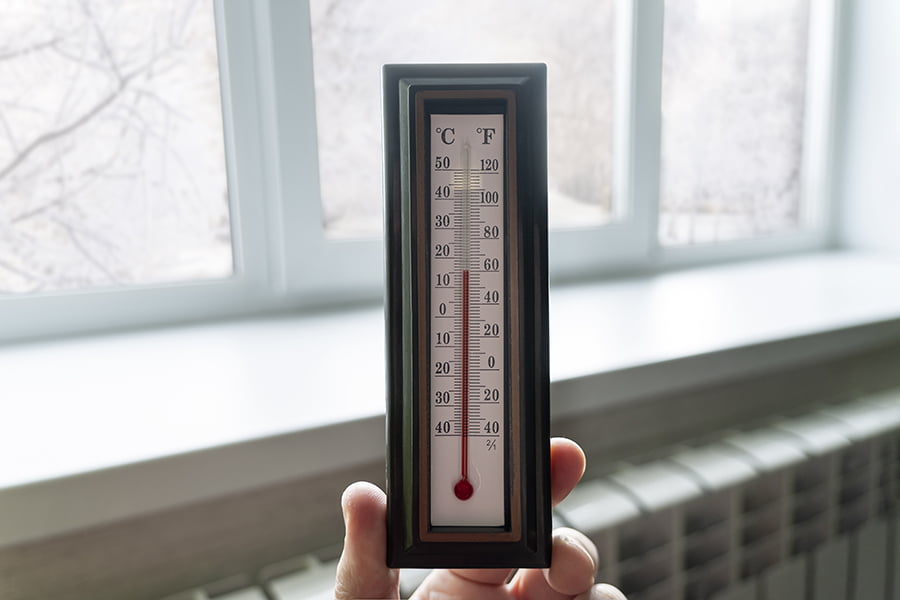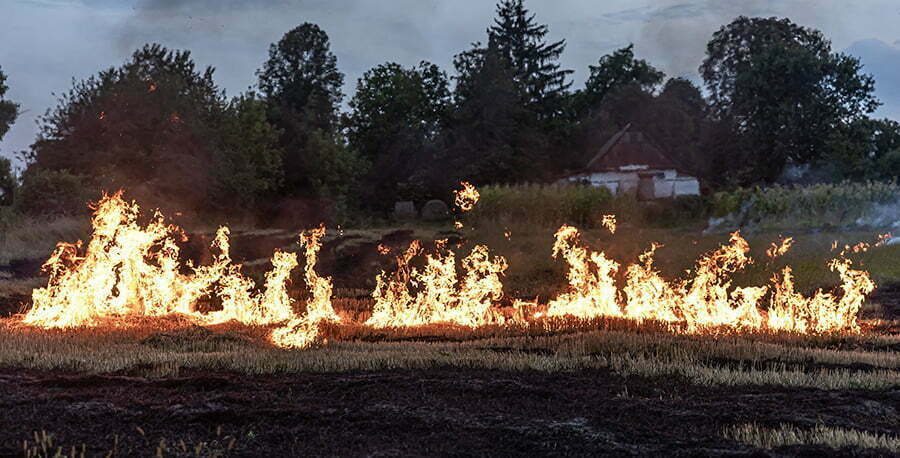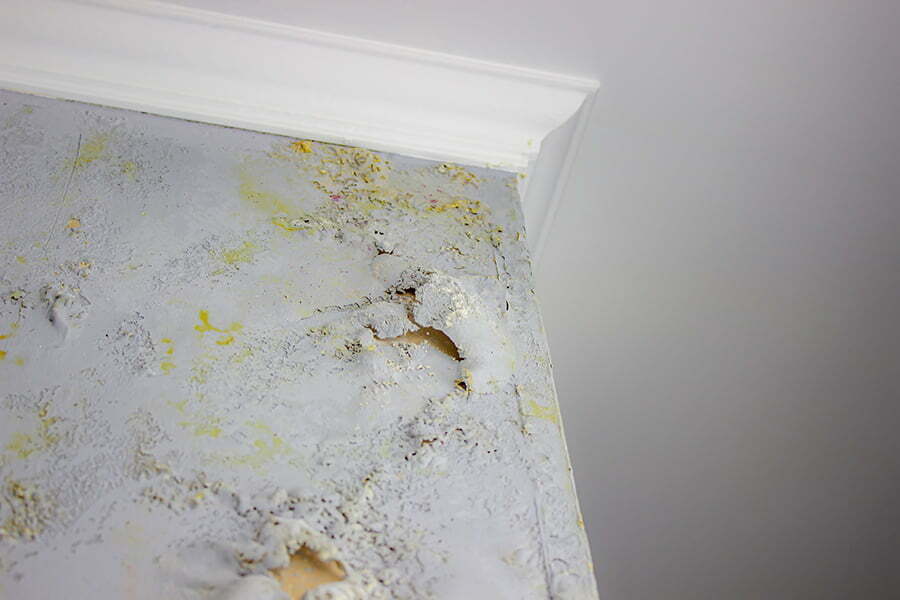Discover how climate change actively affects your home’s air quality and learn what you can do to protect yourself and your loved ones.
As I sat on my couch, watching the news about the recent wildfires that had been raging across the country, I couldn’t help but worry about how these natural disasters were affecting our air quality. As someone who writes about home air quality, it’s always on my mind.
But then I started to wonder – what about those of us who aren’t directly impacted by these fires? How does climate change affect our indoor air quality? That’s when I decided to do some research and share my findings with you in this blog post. So grab a cup of tea and settle in – we’ve got some important information to cover!
The Invisible Intruder: CO2 Levels

One of the most significant ways climate change can impact indoor air quality is through increased levels of carbon dioxide (CO2). While we may not be able to see or smell it, CO2 is a gas that can have serious health implications if left unchecked.
As temperatures rise due to climate change, our homes and buildings require more energy for cooling. This means we’re using more fossil fuels like coal and natural gas which release CO2 into the atmosphere.
As outdoor air becomes increasingly polluted with greenhouse gases from cars and factories, it’s harder for our HVAC systems to filter out these harmful particles.
But what does this mean for us? Well, high levels of CO2 in indoor spaces can cause headaches, dizziness and fatigue – symptoms often associated with poor ventilation. In extreme cases where concentrations are very high (above 5%), people may experience nausea or even loss of consciousness.
So while we might not be directly impacted by wildfires or other natural disasters caused by climate change in our day-to-day lives at home – the invisible intruder lurking within could still pose a threat to our health if left unaddressed.
Rising Temperatures, Rising Humidity

With global temperatures on the rise, we’re experiencing more hot and humid days than ever before. This increase in heat and moisture creates a breeding ground for mold, mildew, dust mites, and other allergens that thrive in warm environments.
I remember last summer when we had an intense heatwave – it felt like there was no escape from the oppressive humidity. Even with our air conditioning running non-stop to keep us cool indoors, I noticed a musty smell lingering in our home.
It wasn’t until later that I realized this was likely due to increased mold growth caused by the high levels of moisture in the air.
But it’s not just about unpleasant smells or allergies – exposure to these indoor pollutants can lead to serious health problems such as respiratory issues or asthma attacks. As someone who values clean indoor air for myself and my family’s well-being, this is concerning news indeed.
So what can be done? In addition to taking steps like using dehumidifiers or ensuring proper ventilation systems are installed within homes (which will help reduce excess moisture), addressing climate change itself is crucial if we want long-term solutions for improving indoor air quality across all households worldwide.
Pollen Invasion: Allergies On the Rise

Climate change is not only affecting our outdoor air quality but also having a significant impact on indoor air quality. One of the most noticeable effects is the increase in pollen invasion and allergies.
With warmer temperatures and longer growing seasons, plants are producing more pollen than ever before. This means that allergy sufferers are experiencing symptoms for longer periods throughout the year.
As carbon dioxide levels rise due to climate change, some plants produce even more potent allergens.
As someone who suffers from seasonal allergies myself, this was particularly concerning news. It’s not just about dealing with itchy eyes and sneezing fits – prolonged exposure to high levels of allergens can lead to respiratory problems like asthma.
So what can we do? Well first off, it’s important to keep windows closed during peak pollen season (usually spring through fall) and invest in an air purifier with a HEPA filter which will capture airborne particles including pollens inside your home or office space. Regular cleaning of carpets & upholstery using vacuum cleaners equipped with HEPA filters will help reduce dust mites & other particulate matter too!
Wildfires and Smoke-filled Homes

Even if you’re not directly in the path of a wildfire, the smoke can travel for miles and impact your home’s air quality.
I remembered reading about families who had to evacuate their homes due to nearby fires. When they returned, they found their houses filled with soot and ash – but even worse than that was the lingering smell of smoke.
That smell is actually made up of tiny particles called PM2.5s (particulate matter 2.5 micrometers or smaller) which can be harmful when breathed in.
But what about those who aren’t forced to evacuate? The truth is that even if you don’t see or smell any evidence of wildfire near your home, there could still be an impact on your indoor air quality from these tiny particles floating around outside.
So what can we do? One solution is investing in an air purifier with a HEPA filter which will capture these small particulates before they enter our lungs as we breathe them in at home during this time period where wildfires are more common due climate change effects such as droughts etc..
Mold Growth: A Hidden Danger

With rising temperatures and increased humidity levels, homes are becoming more susceptible to mold growth. And while many people may think of mold as just a cosmetic issue, it’s actually much more dangerous than that.
Mold spores can cause respiratory problems such as coughing and wheezing in otherwise healthy individuals. For those with allergies or asthma, exposure to mold can be even more severe – triggering asthma attacks or causing allergic reactions like sneezing and watery eyes.
But perhaps the scariest thing about mold is how easily it goes undetected. It often grows in hidden places like behind walls or under carpets where we don’t see it until it’s too late.
That’s why regular home inspections for moisture buildup are crucial – catching any potential issues before they turn into full-blown infestations.
So if you’re concerned about your indoor air quality (and let’s face it – who isn’t?), keep an eye out for signs of moisture buildup in your home and take action immediately if you suspect there might be a problem with molds growing inside your house!
Urban Heat Islands and Stagnant Air

Urban heat islands occur when cities experience higher temperatures than surrounding rural areas due to human activities such as transportation, industry, and construction. As temperatures rise in these areas, so does the concentration of pollutants in the air.
This can lead to an increase in respiratory problems for those living or working within these urban environments.
Stagnant air is another issue caused by climate change that affects indoor air quality. When there are no winds or breezes to move polluted outdoor air away from buildings, it becomes trapped inside with nowhere else to go but indoors.
This means that even if you live far away from an industrial area or busy roadways where pollution levels are high outside your home – you may still be breathing unhealthy amounts of pollutants inside your own house!
It’s clear that we need to take action against climate change not only for our planet’s health but also for our own well-being!
Pests, Dust Mites, and Asthma Triggers

As temperatures rise, these creatures thrive and reproduce at a faster rate. This means that we may see an increase in infestations of insects like cockroaches or bed bugs, as well as higher levels of dust mites.
Not only are these pests unpleasant to deal with, but they can also trigger asthma symptoms for those who suffer from the condition. Dust mite droppings and cockroach feces contain allergens that can cause wheezing, coughing, chest tightness and shortness of breath – all common symptoms associated with asthma.
So what does this mean for our indoor air quality? Well if you’re someone who suffers from allergies or asthma already then it’s important to take steps to reduce your exposure to these triggers by keeping your home clean through regular vacuuming (using a HEPA filter), washing bedding regularly in hot water (above 130°F), sealing up any cracks where pests could enter your home, etc.
But even if you don’t suffer from allergies or asthma directly yourself it’s still important because poor indoor air quality affects everyone living inside the house including children whose lungs are still developing which makes them more vulnerable than adults when exposed to pollutants such as pest droppings.